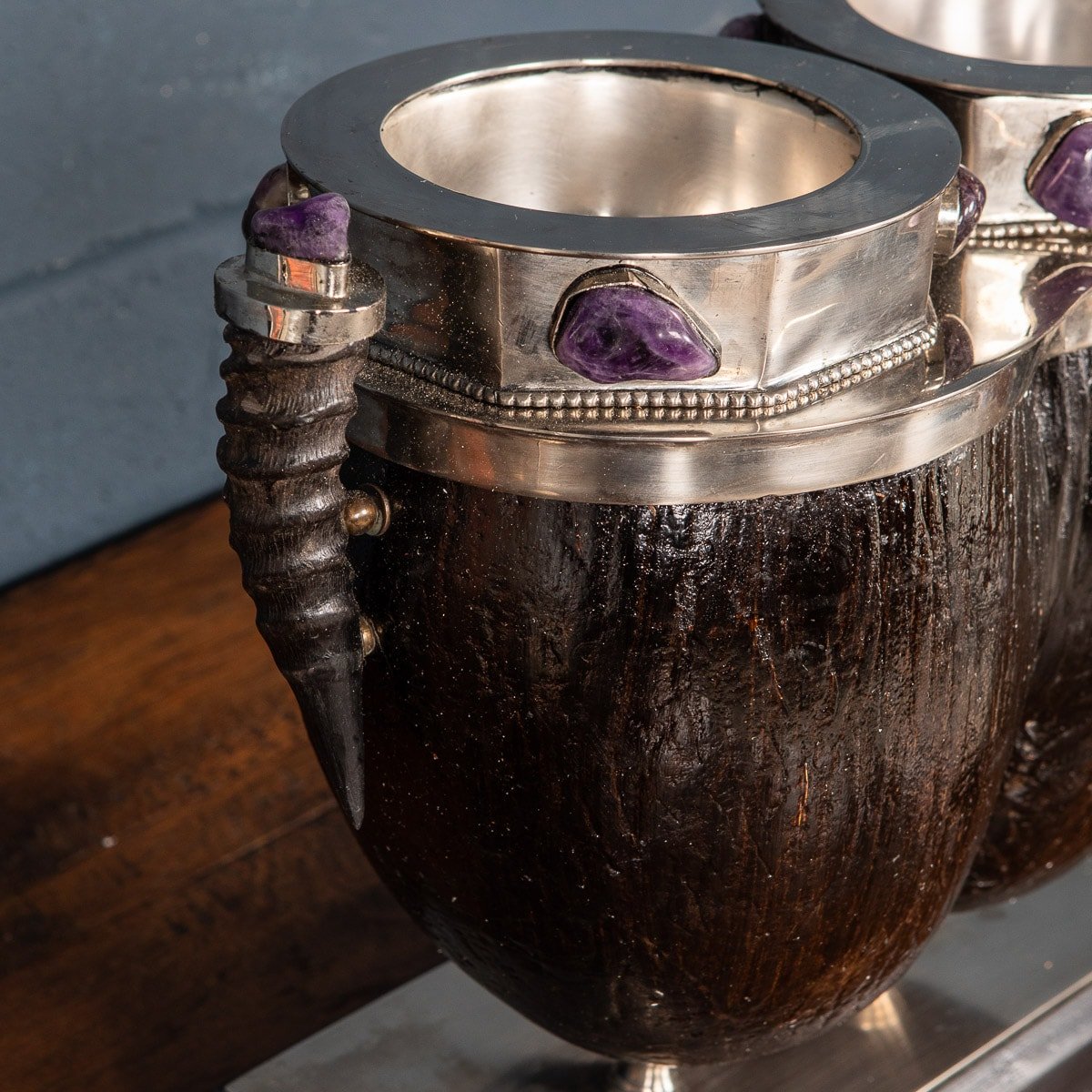A RARE & UNUSUAL COCO DE MER NUT MADE BY ANTHONY REDMILE, LONDON c.1970
An extremely rare and unusual coco de mer box made in the 1970s by Anthony Redmile. Silvered mounts, ostrich egg lids, embellished with malachite, cabochons and finials, flanked by two African antelope horn handles, this item exemplifies Redmile’s work.
Reference Number: B8772
An extremely rare and unusual coco de mer box made in the 1970s by Anthony Redmile. Silvered mounts, ostrich egg lids, embellished with malachite, cabochons and finials, flanked by two African antelope horn handles, this item exemplifies Redmile’s work.
Reference Number: B8772
An extremely rare and unusual coco de mer box made in the 1970s by Anthony Redmile. Silvered mounts, ostrich egg lids, embellished with malachite, cabochons and finials, flanked by two African antelope horn handles, this item exemplifies Redmile’s work.
Reference Number: B8772
DESCRIPTION
An extremely rare and unusual coco de mer box made in the 1970s by Anthony Redmile. Silvered mounts, ostrich egg lids, embellished with malachite, cabochons and finials, flanked by two African antelope horn handles, this item exemplifies Redmile’s work. The two ostrich egg lids lift to reveal two compartments for tea leaves. Perhaps today its use is more symbolic of tea caddies of the past made out of coco de mer nuts. Perhaps it is merely decorative. What is certain is that this is one of the most unusual and finest examples of the great artist’s work.
Anthony Redmile burst into the London interior design scene in the 1960s, producing some of the most eclectic items for his illustrious clients. In this example, as is typically the case, he selects items from nature and natural history and has created the most eccentric of artworks to decorate the home.
The coco de mer nut (scientific name: Lodoicea ) is a very rare seed native to the Seychelles in the Indian Ocean, its suggestive form leading to all sorts of legendary fables. Many were collected by seafarers and gifted to royalty and noblemen who saw them symbols of fertility and embellished them with jewels and precious metals.
Until the source of the nut was discovered in 1768, it was believed to grow on a mythical tree at the bottom of the sea because it was once believed to be a sea-bean or drift seed, a seed evolved to be dispersed by the sea. However, it is now known that the viable nut is too dense to float, and only rotted out nuts can be found on the sea surface, thus explaining why the trees are limited in range to just two islands.
We offer complimentary shipping to all our customers in Great Britain.
We are unable to provide a fixed shipping cost for this item to all other countries.
All international customers must request a shipping quote before purchasing as shipping costs can vary greatly depending on the destination country.
Please note that our interior pieces are located at our Interior Design Showroom in Buckinghamshire, if you wish to see the item in person, please contact us to arrange an appointment.
CONDITION
In Great Condition - No Damage, please refer to photographs.
SIZE
Height: 45cm
Width: 37cm
Depth: 19cm
































